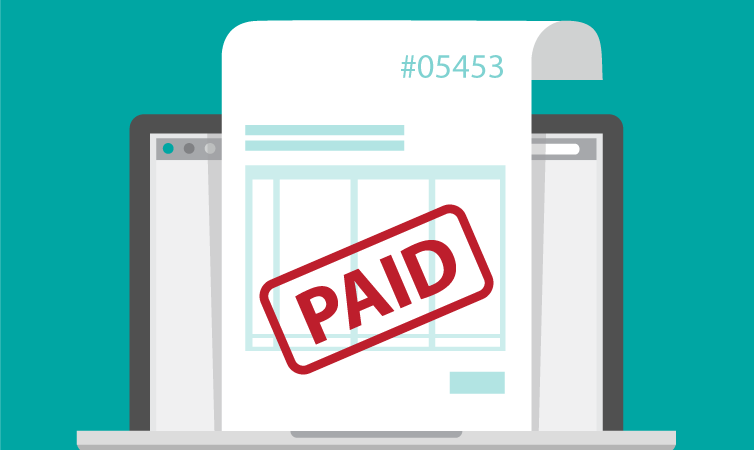Maximizing your invoicing process: A simple approach that pays off quickly
Invoicing is an essential part of managing a company’s cash flow. Since most of a company’s revenues rely on invoicing, inadequate invoicing could seriously compromise a company’s ability to pay its operating expenses.
This article was revised and updated in January 2019.
There is no miracle solution for solving all invoicing issues, since there will always be bad debtors and unforeseen circumstances resulting in late payments. However, by adopting certain practices, you can maximize your processes, reduce the average payment period and even improve your customer experience.
This article provides a few tricks to help you control invoicing. It is primarily meant for startup businesses, but can contain relevant advice for any entrepreneur.
Adopt a professional attitude
Your professionalism affects the way your customers perceive you and, by the same token, can influence their respect of payment deadlines.
It may seem obvious, but if you want to be taken seriously by your customers from the outset, you must project a professional attitude and demonstrate your management skills. Professionalism can take many forms: Regular and courteous communications with your customers, the quality and relevance of the information on your website, the presence and accuracy of your terms of payment before an initial transaction, etc.
Automate your processes
If you haven’t already done so, the first thing to do to improve your invoicing is drop Excel and get a real specialized accounting and invoicing application. A good invoicing solution allows you to create orders and quotations and to subsequently convert them into invoices. With this type of automation function, you no longer have to enter the same information over and over again, which reduces the risk of error and saves you a lot of time.
Send invoices rapidly
It is much better to produce an invoice as soon as the product or service is delivered. Some managers are used to doing their invoicing at a specific time, such as the end of the week or month, but this practice necessarily increases the payment period. To get paid faster, invoice immediately.
Go digital
For greater efficiency, do away with paper and send your invoices by email. Sending the invoice and receiving the payment (cheque) by mail slows down your billing process. With the help of a good electronic invoicing solution linked to your accounting software, you can even provide a payment link so that your customers pay their invoice immediately via electronic means.
If you don’t offer your customers the possibility to pay electronically by credit card or bank transfer, you are missing out on all the advantages of electronic payments: simplicity, speed, security, etc.

Establish clear terms of payment
Define a payment period that takes into account the fact that the average payer is late in paying their invoices. For example, if your cash flow needs obligate you to receive payments within a maximum period of 30 days, ask for the invoice to be paid in 14 days.
To encourage your customers to pay quickly, apply a small discount to invoices paid before the deadline. You may also have to charge late fees. Furthermore, a good accounting solution should help you calculate interest automatically. However, if you choose to charge late fees, make sure your customers are clearly informed by writing this information on the invoice.
Number your invoices
Having a consistent and sequential invoice numbering system contributes to the sound management of a business. In addition to facilitating internal controls, a clear numbering system can help you track invoices and follow up on them. For example, it’s much easier to ask a customer to pay invoice #05453 than pay “last month’s invoice.”
A tip for startup companies: You don’t have to start numbering from zero. Your first customers don’t necessarily need to know that they are your first customers!
Follow up closely
Once the invoice is sent, it’s in your interest to follow up closely to increase your chances of getting paid within a reasonable period. Send a reminder to your customers when the deadline for their invoice approaches and send them another one when they are late. If you have uncooperative customers who persistently don’t pay, send them frequent reminders. Sending account statement by email rather than by mail also speeds things up.
It is important to know your customers and adapt your approach to their payment habits. If you have a large business volume, it may be hard to accurately track all of your invoices and all communications with your customers. Using a good customer relationship management application can help you manage part of the follow-up process and allows you to maintain a history of your communications.
It may also be wise to maintain a dashboard to monitor collection times, total aged trial balances and by customer, etc. You can perform certain calculations semi-manually using an excellent tool developed by the BDC. Better yet, a good business intelligence application can give you all the necessary indicators in real time to evaluate the performance of your invoicing process.
Takeaways
As an entrepreneur, collecting payments that are owed to you is not the most pleasant task. That is clear. However, the way you handle the situation can have a major impact on the result. Being firm in your terms does not mean that you are threatening, and being courteous does not mean letting people walk all over you.
The smooth running of your business depends a great deal on money coming in. Therefore, take the time to establish an effective billing process, with conditions that suit you.

The Acomba blog is brimming with articles on business, IT and business management.
Subscribe so you don’t miss a thing!

I am already subscribed
